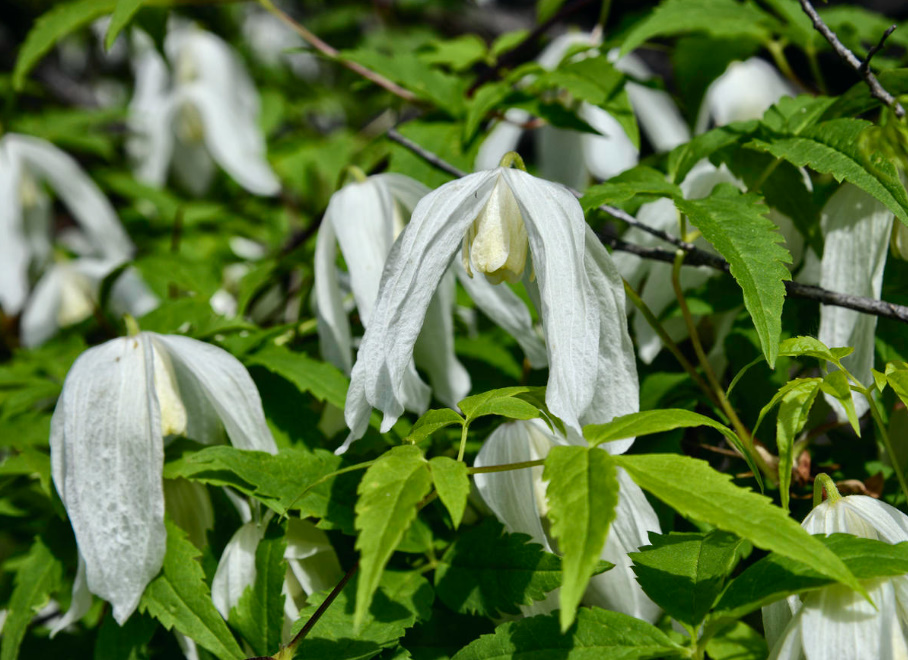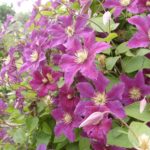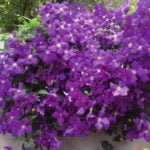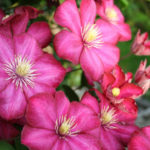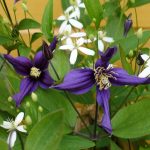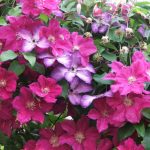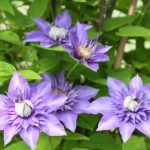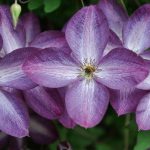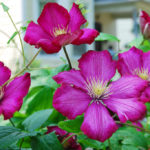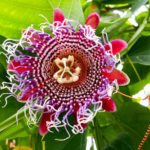In continuation of the conversation about decorative vines, it’s time to get to know their wonderful representatives — Clematis. First, we will get acquainted with the botanical dossier of unpretentious beauties, and then we will learn all the wisdom of their cultivation and reproduction.
Botanical dossier
Clematis — lianas and clinging shrubs, belong to the Ranunculaceae family. In spring they bloom on the shoots of the previous year, sometimes there is a summer bloom on the shoots of the current year.
Clematis is characterized by:
- deciduous;
- light green leaf blades 3-5 cm long, from lance-shaped to oblong;
- the flowers are bell-shaped, single; simple, semi-double and double; with a diameter of 3-7 cm or more. Sepals erect, stamens pubescent;
- the fruits are polygons collected in heads with pinnate columns.
Types and varieties
According to the modern classification, 6 species can be considered clematis, which are distributed in the temperate zone of Europe, Siberia, Northern China, North Korea, Northern Japan and North America.
Clematis alpina
Clematis alpina is a shrubby liana 2-3 m high and up to 1.5 m wide . She is originally from Europe.
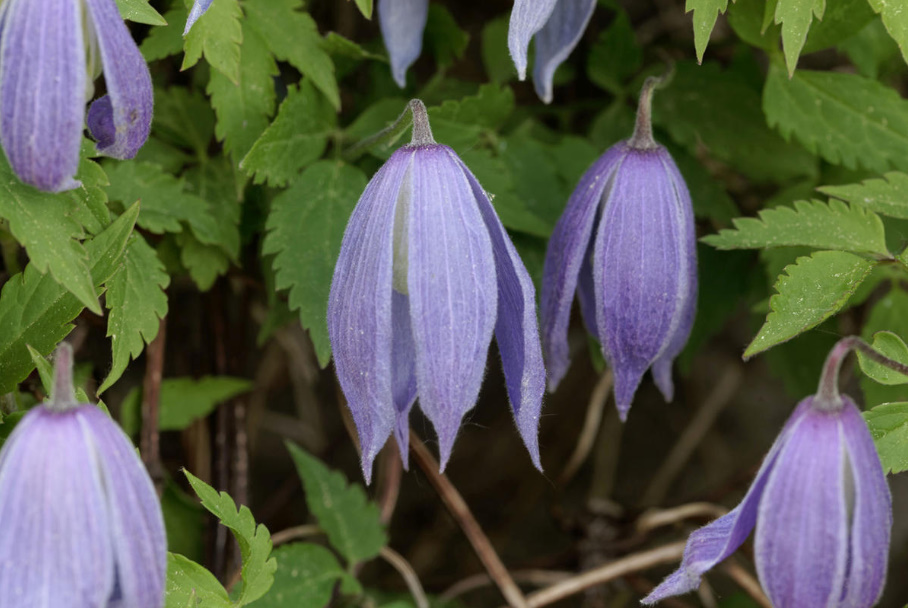
The leaves are twice trifoliate or trifoliate. The flowers are bell-shaped, solitary, drooping, 4-7 cm in diameter, blue, with a white center; they bloom on overwintered shoots in May-June, again in mid and late summer.
Decorative varieties:
- C. alpina subsp. sibirica.
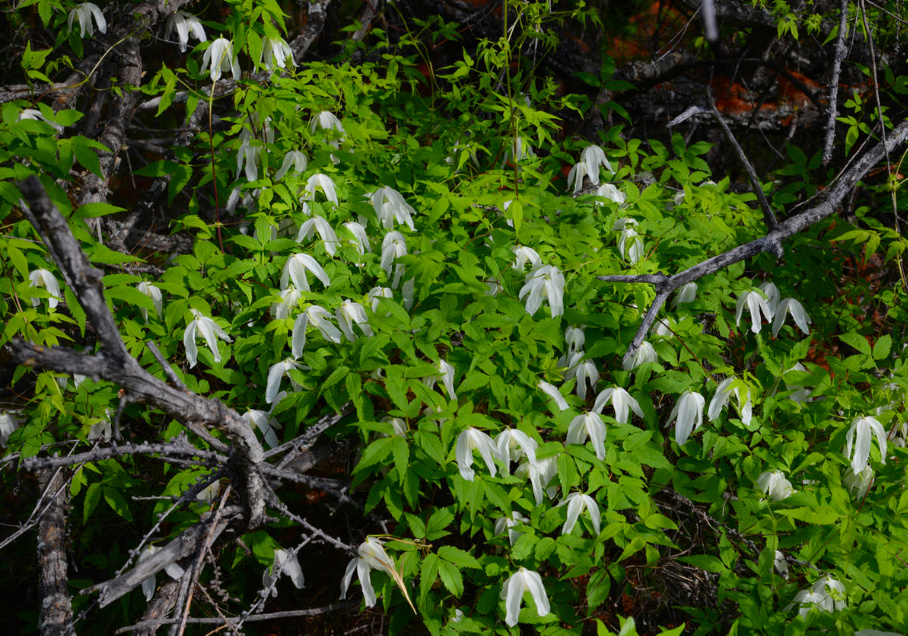
Liana is a leaf climber, rising to a height of 2-3 m. The leaves are twice triplicate, with long petioles twining around the support. Flowers with white and yellowish-white sepals, 3-4 cm in diameter, bloom in June-July. It is found in Western and Eastern Siberia, Central Asia, Mongolia;
- C. alpina subsp. ochotensis.
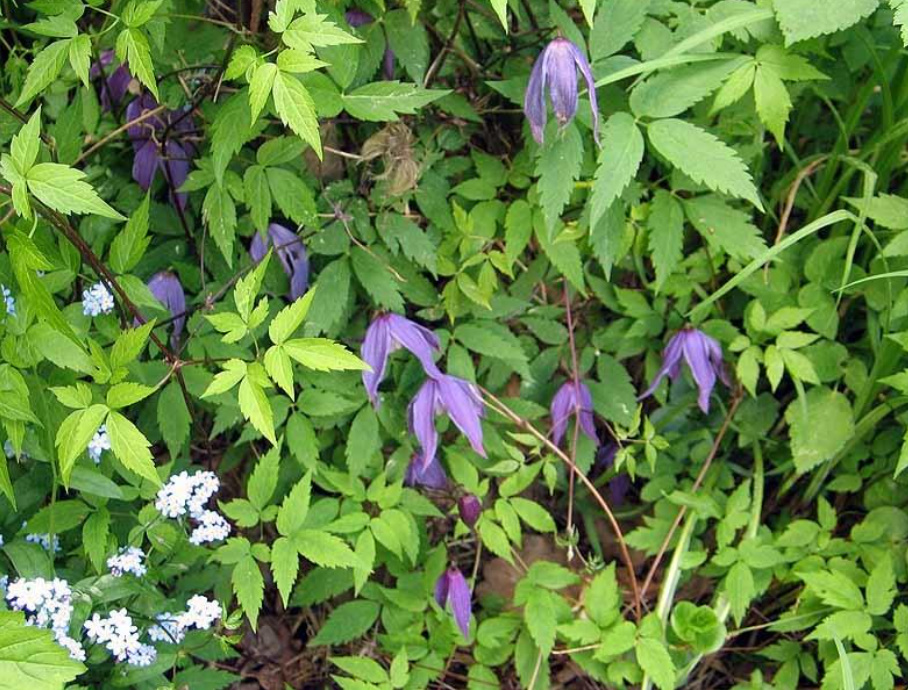
The name is given according to the place of growth — the territory of Northeast Asia, the coast of the Sea of Okhotsk. The flowers are broad-ringed, from light to dark purple in color.
Decorative varieties:
- ‘Constance’ — flowers are semi-double, dark purple-pink;
- ‘Frances Rivis’ — blue flowers, slightly curved;
- ‘Frankie’ — blue flowers, cream stamens, with pale blue tips;
- ‘Helsingborg’ — flowers with blue-purple pointed sepals and brown-purple stamens;
- ‘Brunette’ — dark purple-purple flowers, cream stamens;
- ‘Albina Plena’ — double flowers, wide open, white, stamens light yellow;
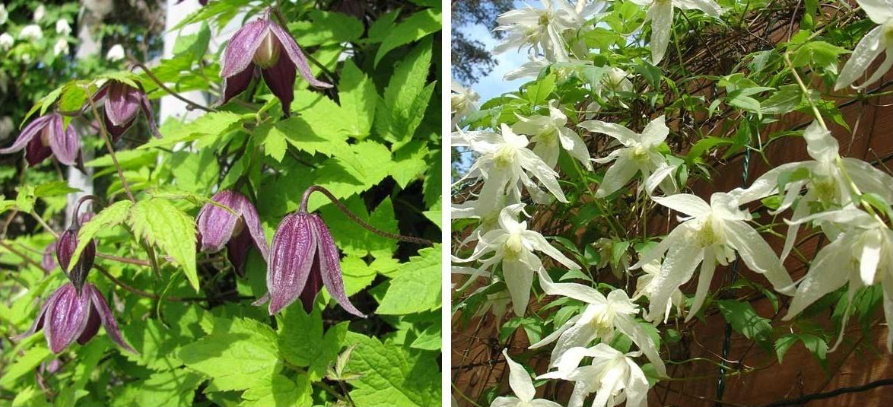
- ‘Pamela Jackman’ — deep blue flowers, cream stamens;
- ‘Pink Flamingo’ — semi-double flowers, light pink, with darker veins at the base, cream stamens;
- ‘Willy’ — pink flowers, darkening towards the base, cream stamens;
- ‘Tage Lundell’ — 2.2-3.2 m high, purple flowers, repeated flowering — in late summer.
Clematis macropetala
Clematis macropetala is a deciduous liana native to Mongolia, China. It reaches 2-3 m in height, up to 1.5 m in width.
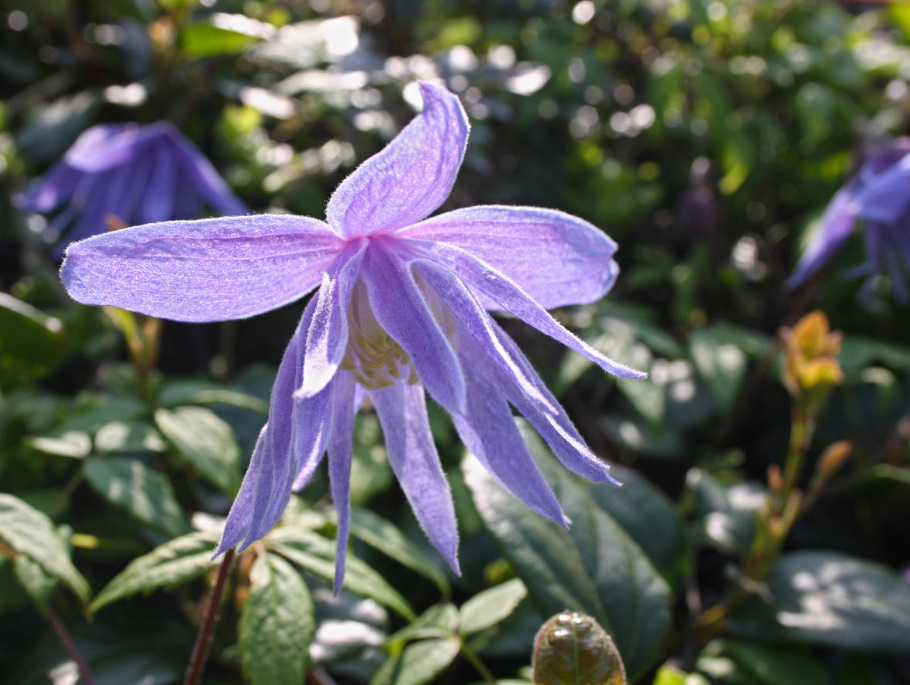
Bell-shaped flowers with 4 long sepals and shorter stamens, semi-double, from blue to violet-blue color, bloom in spring or early summer. The flowers are larger than the previous species, their diameter can reach 12 cm.
Decorative varieties:
- ‘Blue Bird’ — flowers are open, semi-double, pinkish-lilac-blue, up to 12 cm in diameter;
- ‘Markham’s Pink’ — light pink flowers;
- ‘White Swan’ — compact, up to 1 m wide, white flowers, 8 cm in diameter;
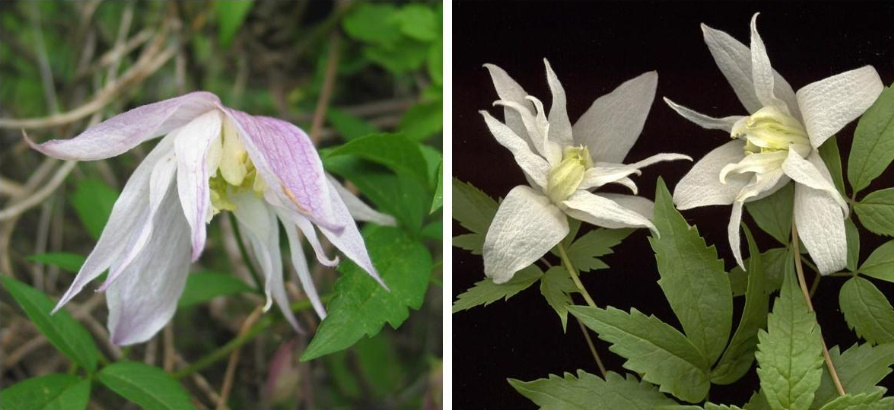
- ‘Rosy O’Grady’ — flowers open, semi-drooping, mauve, 8 cm in diameter;
- ‘Jan Lindmark’ — mauve flowers;
- ‘Lagoon’ — double flowers, dark blue.
Features of cultivation and care
1. Clematis alpina and Clematis Lagoon (including varieties, varieties) are ideal for the middle belt and more northern regions, since their winter hardiness (according to USDA data) corresponds to zones 3-9.
2. All Clematis prefer shade, partial shade. In the open sun, their flowers and leaves grow smaller.
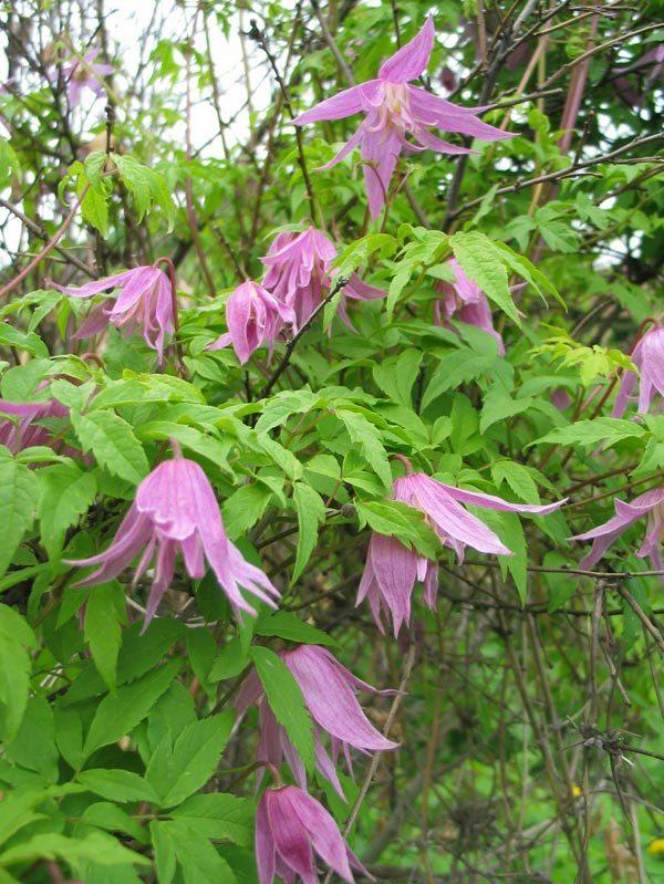
3. They develop better on sandy loam soils that are well permeable to water and easily tolerate the lack of moisture in the upper layers of the soil. At the same time, they like good watering, but not stagnant waterlogging. For them, 1-2 buckets of water will be enough for a 5-6-year-old bush 2-3 times a week.
4. They are responsive to fertilizing. In the spring, urea is applied (1 tablespoon per bucket of water), during the flowering period — a complete mineral fertilizer with trace elements. Feeding with liquid mullein (1 bucket of mullein per 10 buckets of water) has a very good effect on Clematis.
5. Shoots for the winter should be shortened.
6. Resistant to pests and diseases.
7. Propagated by seeds, cuttings, layering and dividing the bush.
Use in the country
Cute Clematis seem to have been created for a romantic garden: the flowers lowered down look tender and touching, elegant vines look great on openwork supports.
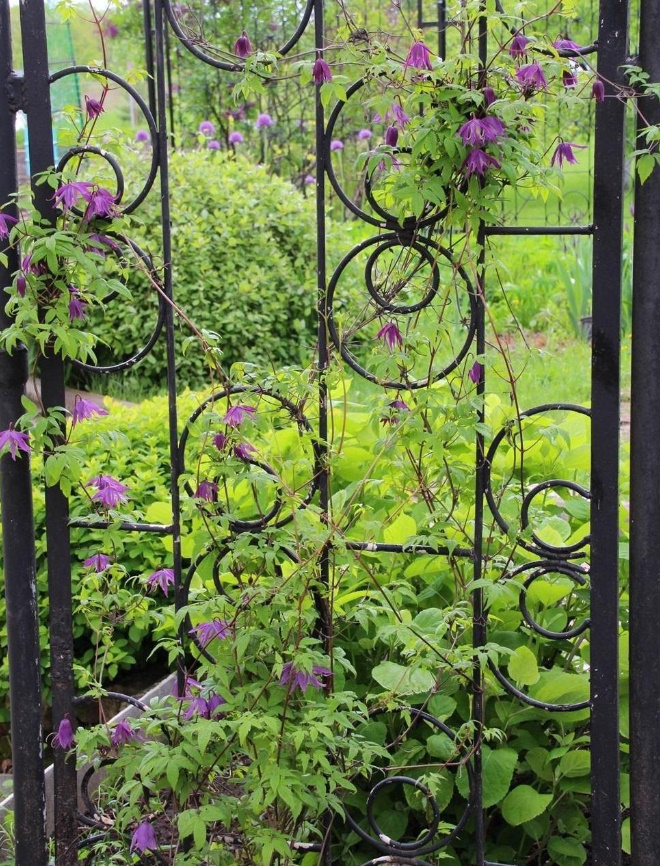
Suitable for decorating low retaining walls of western, northern and north-eastern orientations, planting in semi-shaded rockeries among stones. Clematis look great in the form of small groups against the background of coniferous trees.
Good neighbors
Successful companions for them will be rosehip, Philadelphus, conifers with a superficial root system. But most of all Clematis like to climb the shoots of climbing roses, and such a luxurious duo, you will agree, will decorate any cottage.
Do Clematis grow in your dacha? Why do you like (or dislike) them?
